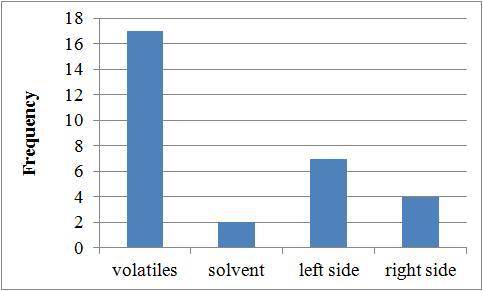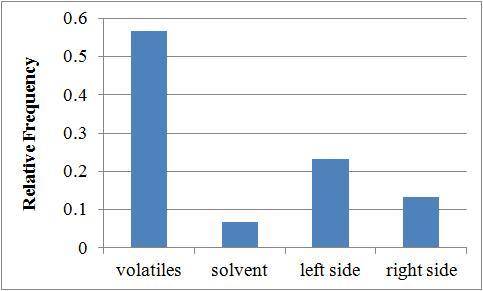
Mathematics, 08.04.2020 00:46 laraekeyes
Seedlings of the parasitic plant Cuscuta pentagona (dodder) hunt by directing growth preferentially toward nearby host plants. Lacking eyes, or even a nervous system, how do they detect their victims? To investigate the possibility that the parasite detects volatile chemicals produced by host plants. Runyon et. al (2006) placed individual dodder seedlings into a vial of water at the center of a circular paper disc. A chamber containing volatile extacts from tomato ( a host plant ) in solvent was placed at one edge at of disc, whereas a control chamber containing only solvent was placed at the opposite end. The researchers divided the disk onto equal- are quadrats to record in which direction the seedlings grew. Of 30 dodder plants tested. 17 seedlings grew toward the volatiles. 2 grew away (toward the solvent), 7 grew toward the left side, and 4 grew toward the right side.
a. Graph the relative frequency distribution for these results. What type of graph is ideal?
b. What are the relative frequencies expected if the parasite is unable to detect the plant volatiles or any other cues present? Add these expected relative frequencies to your graph in part A
c. Using these data, calculate the fraction of seedlings that grow toward the volatiles. What does this fraction estimate?
d. Provide a standard error for your estimate. What deos this standard error represent?
e. Calculate the range of most plausible values for the fraction of dodder seedlings that grow toward the volatiles under these experimental conditions. Does it include or exclude the fraction expected if the parasite is unable to detect plant volatiles or other cues present?

Answers: 3
Another question on Mathematics

Mathematics, 21.06.2019 13:40
Use the distance formula to determine the distance that point q is from r on the hypotenusebased on a 2-3 ratio.i need asap !
Answers: 3


Mathematics, 21.06.2019 18:40
Some boys and girls were asked if they had a pet. one third of the group were boys. there were 20 boys. 20% of the girls had a pet. boys with a pet : girls with a pet = 1 : 5 i need to know how many girls there are.
Answers: 3

Mathematics, 21.06.2019 19:30
Select the margin of error that corresponds to the sample mean that corresponds to each population: a population mean of 360, a standard deviation of 4, and a margin of error of 2.5%
Answers: 2
You know the right answer?
Seedlings of the parasitic plant Cuscuta pentagona (dodder) hunt by directing growth preferentially...
Questions



Mathematics, 10.06.2021 21:40

Mathematics, 10.06.2021 21:40



Mathematics, 10.06.2021 21:40

Mathematics, 10.06.2021 21:40






Mathematics, 10.06.2021 21:40

Mathematics, 10.06.2021 21:40

Social Studies, 10.06.2021 21:40


Mathematics, 10.06.2021 21:40

Mathematics, 10.06.2021 21:40






